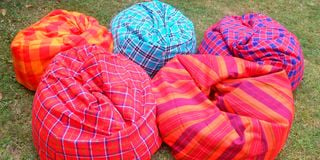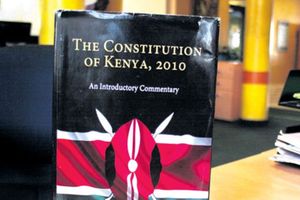
The bold colours of the Maasai shuka defy the gloominess and bring much-needed sunniness.
I just had a Kenyan experience – in northeastern Uganda. We were on the edge of Soroti city in the Uganda region of Teso when an itinerant Maasai trader approached to sell his wares. He had Maasai blankets (sheets), belts, sandals, bracelets, necklaces, and staffs. If he is Maasai, not just another Kenyan in Maasai signature trappings, he had travelled possibly 500 kilometres to get there.
He was not a rare adventurer. I have encountered many plying their trade in northern Uganda, travelling at least 900 kilometres to do their thing as far as the Uganda-South Sudan border town of Nimule. It’s just that Soroti is not what it used to be. It used to host the East African Community’s Civil Aviation Academy, better known as the Soroti Flying School.
Hence, the town spotted many youthful and dashing pilots, including Kenyans and Tanzanians. Now it is a pale shadow of its old glorious self. It had the region’s largest meat canning factory, which collapsed in the 1970s, and the site now spots mounds of rubble with rusty tins strewn all over its grounds.
A large state-funded juice processing factory was recently built on the city's outskirts, but perhaps unsurprisingly, it quickly started the journey toward being another white elephant. In the complex web of East African politics and economics, the Ugandan government sought to salvage it by selling it to former Ethiopian Prime Minister Meles Zenawi’s wealthy widow, Azeb Mesfin.
Larger market
When the Maasai trader returns in two or so years, he might find a larger market, as some of the hundreds of Ethiopian (and Eritrean) small business owners displaced by civil war in South Sudan and who streamed south into northern Uganda, move to Soroti to coalesce around a major investment by their matriarch.
He and his comrades, however, have already made their mark. Over the last 14 years, the Maasai blanket has spread slowly, surely, and far in both urban and rural Uganda. At that time, it was still a novelty, the gift you carried for your Africanist middle-class relatives and friends, or your favourite aunts upcountry as a Christmas present. In return, when you got back into your car to drive back to the city, you would find they have put live chickens, possibly even a small goat, bananas, potatoes, and fruits in the boot in appreciation. Not anymore. It is probably being sold in the pop-up roadside market near their home.
The Maasai sheet’s popularity is growing not just in Uganda, but Africawide. I did the lazy thing and asked an artificial intelligence (AI) assistant why it was popular.
Back came the answer:
“Maasai blankets, also known as shuka, are popular for several reasons:
1. Cultural significance: They are an integral part of the Maasai identity and traditions in East Africa, symbolising heritage and pride.
2. Distinctive colours and patterns: The blankets are known for their vibrant colours, especially red - believed to scare away lions - and the checkered patterns. These bold designs have caught the attention of the global fashion and design industries.
3. Versatility and functionality: Made from durable and warm materials, Maasai blankets are suitable for different climates, especially in the cool, windy regions where the Maasai live. Their versatility makes them useful as clothing, bedding, or shawls.
4. Global appeal: With the rise of African-inspired fashion, the Maasai shuka has gained international recognition for its aesthetic, symbolising both tradition and modern style. Their combination of beauty, tradition, and practicality has made them popular beyond Maasai communities, extending their reach to fashion, home decor, and souvenirs.”
Clearly, not enough. I had to do some hard work. Even within Kenya, where the majority of the East African Maasai people live, and which has been the hotbed of the marginalised community’s creativity, the last 14 years have seen an explosion of the colours in which the Maasai shuka presents.
The social and political statements expressed by these bright colours could likely be part of their appeal. Kenya and East Africa in general, have had some good times in the last two decades. But they have also had too many horrid times; war, election violence, repression, deep political polarisation, debilitating corruption, poverty, natural disasters, and many other challenges.
The bold colours of the shuka defy the gloominess and bring much-needed sunniness. And they do it in a way little else does. If you study African patterns from North Africa to Southern Africa, the regular checkered motif of the shuka is not common. We do the richness and flamboyance of the kitenge, the etchings and paintings of Venda art, the intricate embroidery of the Bedouins, and the vibrant monochromism of the Tuareg.
And that might be another source of the force of the shuka. In our chaotic public arena, topsy-turvy national lives, and roads and streets that are scenes from hell, checkered patterns are orderly and project control. If we don’t have the power to control events in our hands, at least we can wear the Maasai shuka, cover ourselves with it, or relish it hanging on a wall.
The author is a journalist, writer, and curator of the “Wall of Great Africans”. Twitter@cobbo3













